Electronic music live: How electronic musicians present their performances
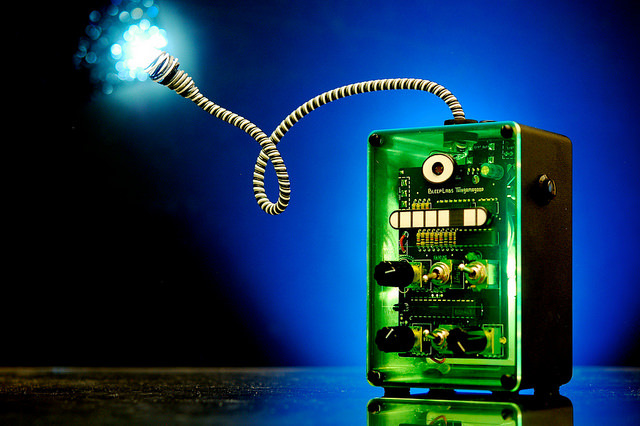
Photo by JD Hancock / CC
With the invention of the first audio recordings in the 19th century, people had the opportunity to enjoy their favorite tracks at home. The lively sounds of guitars, drums and other instruments - all this became available at home.
')
But in the process of technology development in the mid-20th century, the concept of live music has changed. Famous producers began to record their albums in studios, and not live, as it was before. Under studio conditions, musicians had the opportunity to use such sounds in recordings that they could hardly have been able to reproduce in a live performance.
As a result of development, new genres, ideas and ways of presenting musical material to the listener have appeared. Electronic music has ceased to be "alien" to music lovers, moreover, now many associate it with a live performance. However, not everyone has time for technological innovations. Someone even now, seeing a musician who “picks” in his laptop, is surprised: “What is he doing there? Mail, perhaps, checks? Or does something really do with the music I hear? ”
Learn about how a live performance in the electronic music genre goes, the easiest way for electronic musicians themselves. Englishman Robin "Scanner" Rimbaud, Frenchman Xavier "debruit" Thomas, German Boris "Comfort Fit" Mezg and a trio from New York "Archie Pelago" are artists who not only write electronic music, but also (mostly) perform live and call the main feature of a live performance is its unpredictability - unlike the usual DJ-set, where the musician has prepared a certain sequence of songs.
Anything can happen during a live performance. For example, the equipment may fail or the artist himself may make a mistake. Or not allow it, but start improvising and create a completely different atmosphere for your performance.
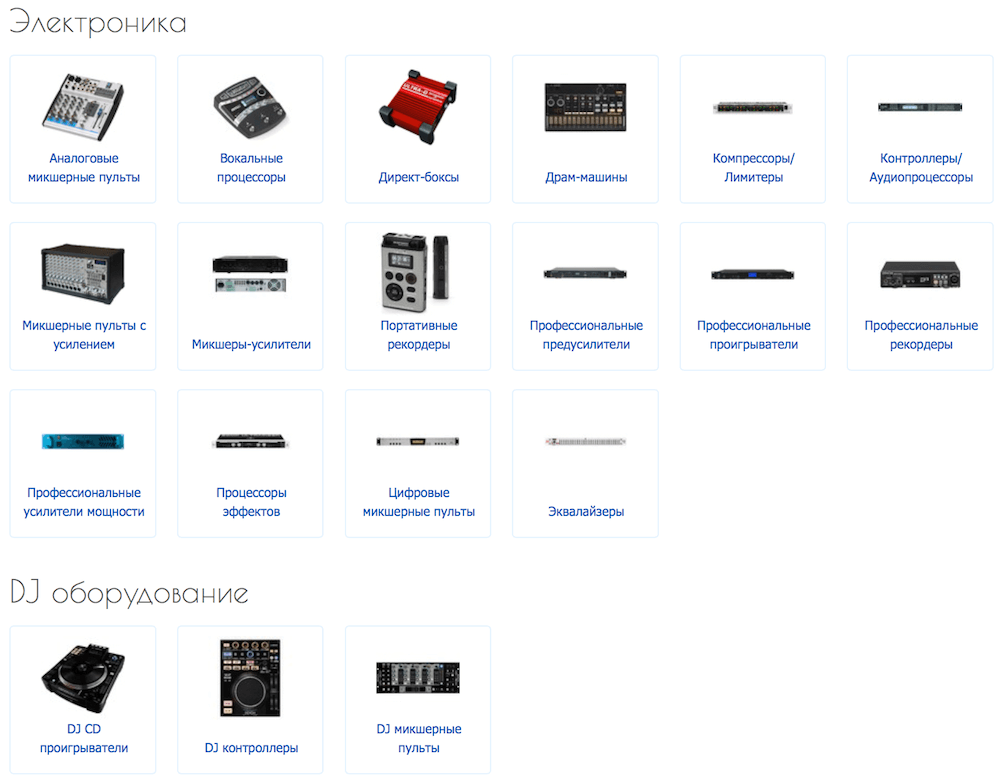
More than 50 categories in the section "Professional Audio"
In general, the concepts of improvisation and electronic music are inseparable. All the basic preparatory processes take place in the studio, so the musician doesn’t have significant limitations for improvisation. Of course, there is a plan that they will try to adhere to, but within the framework of this plan there is complete freedom. It is worth noting the fact that musicians are preparing a separate material for a live performance. It is significantly different from what can be heard on their studio albums.
To imagine how this material looks like, you can take as an example any track - as a rule, a large number of different instruments and sounds are used to create it. The format of a live performance assumes that all these sounds and instruments are separated: a musician can use one or another element or a fragment of a recording independently of another, and this makes it possible to improvise on stage.
Instruments
In addition to the prepared material in the arsenal of each musician there are effects on the mixing console, specially prepared by the artist for a particular song. Using them, you can, for example, remove some frequencies or add noise. Do not forget about the tools - samplers, controllers and countless others. With them, you can completely change the track being played.
There are many variations of tools in the modern world. They all look different, perform different functions, and they all need their own special approach. Some tools have a lot of buttons, others have moving parts, and some have neither one nor the other. A striking example of the latter is a tool developed in 2003 by graduates of the University of Pompeu Fabra - Reactable. It is a large round table with a touch-sensitive surface highlighted from below.
On a table various figures can settle down and, changing their position, it is possible to change an outgoing signal. Due to the fact that the surface of the table is large enough, several people can play simultaneously on this instrument. Also, the developers claim that learning to play it will not be difficult. Through trial and error, you can understand how everything works and what all the blocks are responsible for. Reactable is an ordinary synthesizer with an unusual design.
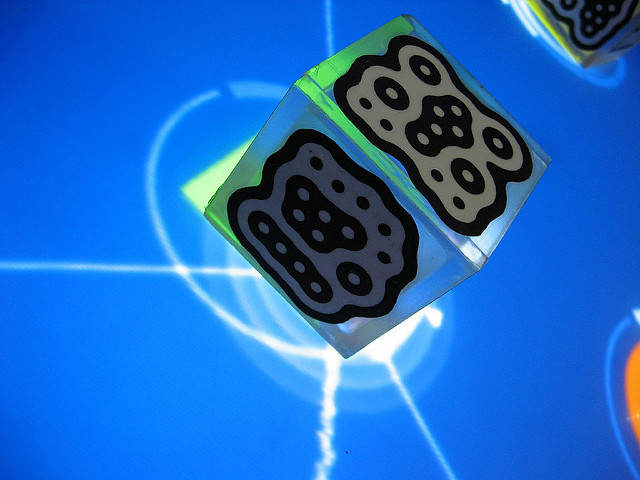
Photo of Luís Leão / CC
The instrument became especially popular after Icelandic singer Bjork noticed it. She decided to use it in her performances, and in 2007 at the Coachella festival, where she performed as part of her tour in support of the album released shortly before this album, the instrument was presented to the general public.
In addition to the table itself, the tool uses special blocks. A total of six types, and they are all different shapes and sizes. Everyone is responsible for certain functions. Outgoing sound will depend on how these blocks are placed on the table. Changing their location, you can, for example, change the frequency of the signal or the degree of use of filters.
Under the surface of the table is a computer with specially developed software (reacTIVision), which performs all computational operations for the operation of the tool. You can watch and listen to this instrument at work here , and read about other interesting musical instruments on this portal.
Another tool that is often used by musicians in performances is the Ableton controller, which allows you to “collect” a composition from a set of ready-made fragments and improvise as part of a performance, and its improved version is Ableton Push 2.
About him in his article tells the musician and journalist Peter Kirn. This is not to say that Ableton Push 2 has undergone minor changes. Outwardly, he is very similar to his older brother, but in this model, developers have paid more attention to detail. The pad keys are now deeper and, accordingly, their turn has also changed. Now they react to the angle and degree of depression.
The main structure has become slightly larger in size and has gained considerable weight - this allows us to judge the quality of the materials used. The developers conducted enough research on the analysis of the use of controllers by musicians, and as a result, they found a suitable position for all keys. The controller is now covered with a special material that is resistant to abrasion and scratches.
Peter emphasizes: “You experience other impressions from the new model, and, clearly, it became much more pleasant to play it. Less time now can be given to the monitor screen and more writing music.
The controller displays all the necessary information, and you can access the necessary folders directly from the device itself. No need to turn to the computer and grab the mouse. Through the Browser button on the controller, you can get to any necessary files and settings. "
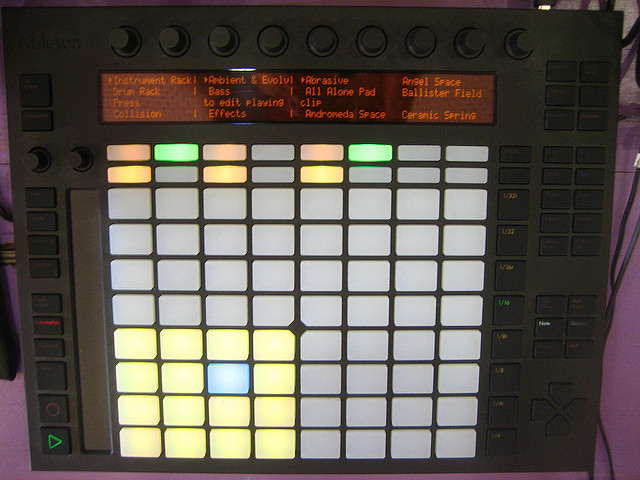
Photo by Iwan Gabovitch / CC
The Simpler sampler was redesigned. Access to it has become much more convenient, and the new modes greatly facilitate the work process. Classic modes remained in the sampler (sound is played until the key is released), but new ones have appeared.
When sampling in One-shot mode, the sound will continue until the file is finished. And in the new mode of “slicing” samples (Slicing mode), the device will highlight the main points from the whole audio file and assign each one to one of the 64 pads. In each mode, you can change the tone of all samples to achieve the desired sound.
The opinion of another music expert can be heard in this video , where he will tell and clearly show the advantages of the new controller from Ableton.
Another “working” instrument of an electronic musician that I would like to draw your attention to is Linnstrument (we have already described it in detail in one of our materials ). This tool is developed by the "founding father" of all modern controllers Roger Lynn . It was under his leadership that such legendary drum machines as the MPC60 and MPC3000 came out. Linnstrument is a controller with 200 pads, each of which determines the pitch and timbre of the sound according to the degree of depression.
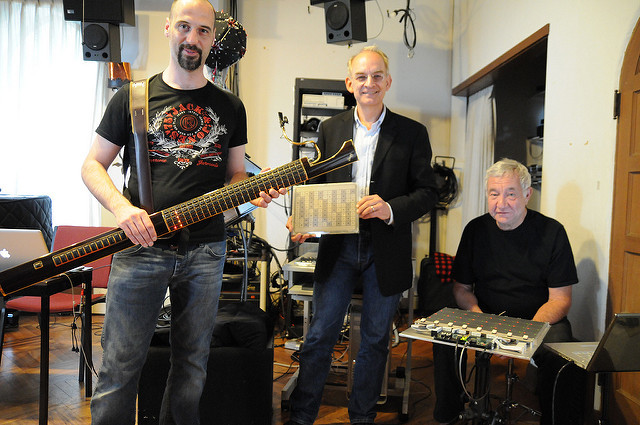
Photo by Thomas Bonte / CC
This tool is comfortable to play with two hands, and special clamps on the edges of the device, allow you to fasten the belt and play it standing up. The main goal in the development of this device, Roger set for himself to return the musicality and melody to the electronic scene.
The boom caused by drum machines radically changed the idea of music, and the use of loops (the method of looping a musical fragment) and samples, according to Lynn, "completely kills the concept of music." Roger hopes that Linnstrument will allow modern music to find a new sound, and musicians to improvise more and work with a “live” sound.
And in this video, you can hear Roger’s comments on his invention.
Returning to the opinion of the musicians: they all agree that you should not get hung up on any one instrument. Every year the number of new products will increase, and their capabilities - to expand dimensionlessly. Scanner and Comfort Fit in the new tools especially like the element of “insecurity”.
This is a kind of guarantee that if the hardware suddenly fails, the performance will not need to be stopped, but it will have to be improvised. But the main thing for musicians is not technological innovation or “tricked out”, but a banal convenience of work - at the basic level, the instrument should at least have no signal transmission delays.
Perception difficulties
As already sounded above, not everyone understands what a person is doing at a speech, “picking” in his laptop. Seeing a huge number of incomprehensible objects for themselves, the viewer tries to understand what is happening on the stage. Unfortunately, it rarely works out on its own, so a kind of “barrier” between the musician and the listener arises.
For all musicians the problem of the barrier is the main when interacting with the public. And everyone tries to fight it in their own ways. For example, Comfort Fit began to deploy its controllers facing the public. He did it, first of all with the purpose of ergonomics - with a long game his hands got tired, but a change in the location of the equipment solved this problem. And, miraculously, this arrangement of controllers began to attract more people - they saw what the musician was doing, and began to reach for the scene.
“Such actions really help people understand how things are going. If I stop playing, then the music stops playing. ”
- Comfort Fit
“I always try to somehow reach people from behind my desk. It is not necessary to jump or somehow attract attention. It is enough just to show that I am a human being, and not some kind of robot. ”
- Scanner
Debruit approached this issue even more radically. The main barrier on the stage has always been considered a laptop. The musician constantly looks into it, and some of the audience sees only the edge of the artist's head. So, Xavier excluded this element (figuratively).
The screen of his laptop is turned off, so the musician is not distracted by it. Xavier himself never thought that he would be able to memorize his songs, because the amount of information in each track was enormous. Now the musician is guided by the color of the pads on his controller.
“But, first of all, the main role is played by music, and not its presentation. The listener must be immersed in it and understand the characteristics of a live performance. ”
- Debruit
It would seem, since there are so many incomprehensible and interesting things on stage, so why not show the viewer what the musician sees. Namely - the screen of his laptop, because it is there that the artist (if you do not take into account Debruit) watches most of the entire performance.
However, the musicians react to such a solution of this problem without much approval. All agree on one thing - to use such a visual element, you need a suitable atmosphere and atmosphere.
The Archie Pelago trio showed its screen at lectures at the university, where artists told about the theory of writing electronic music. In this situation, the screen demonstration turns out to be most welcome. In other cases, people will think completely about the other, trying to concentrate on displaying the screen. And most importantly, they will stop enjoying music.
“For people who are not familiar with the program in which the music is written, the process may seem rather strange. They will begin to figure out what works and how, but in the end they will rather get confused without understanding the logic of what is happening. ”
- Archie Dan
Oddly enough, the most effective solution to breaking down the barrier between a musician and an audience is that artists call simple dialogue. All musicians, one way or another, try to communicate with the public, somehow interact with it.
In addition to small roll calls during the performance, some musicians also keep in touch after the party or at specially designated meetings where people can ask questions of interest. Such a connection is beneficial to everyone - the musician understands what the fans are missing and how best to submit this or that material, and the listener is enlightened and learns something new for himself.
“The listener, it seems to me, it is important to understand what he will receive in the end. When you paid the money, expecting to get one, and get something else, the situation is not the best. In my opinion, the more aware the listener is [about the features of electronic music], the more comfortable he will feel [at a concert] "
- Archie Greg
PS A couple of recent posts on our blog:
Source: https://habr.com/ru/post/394865/
All Articles